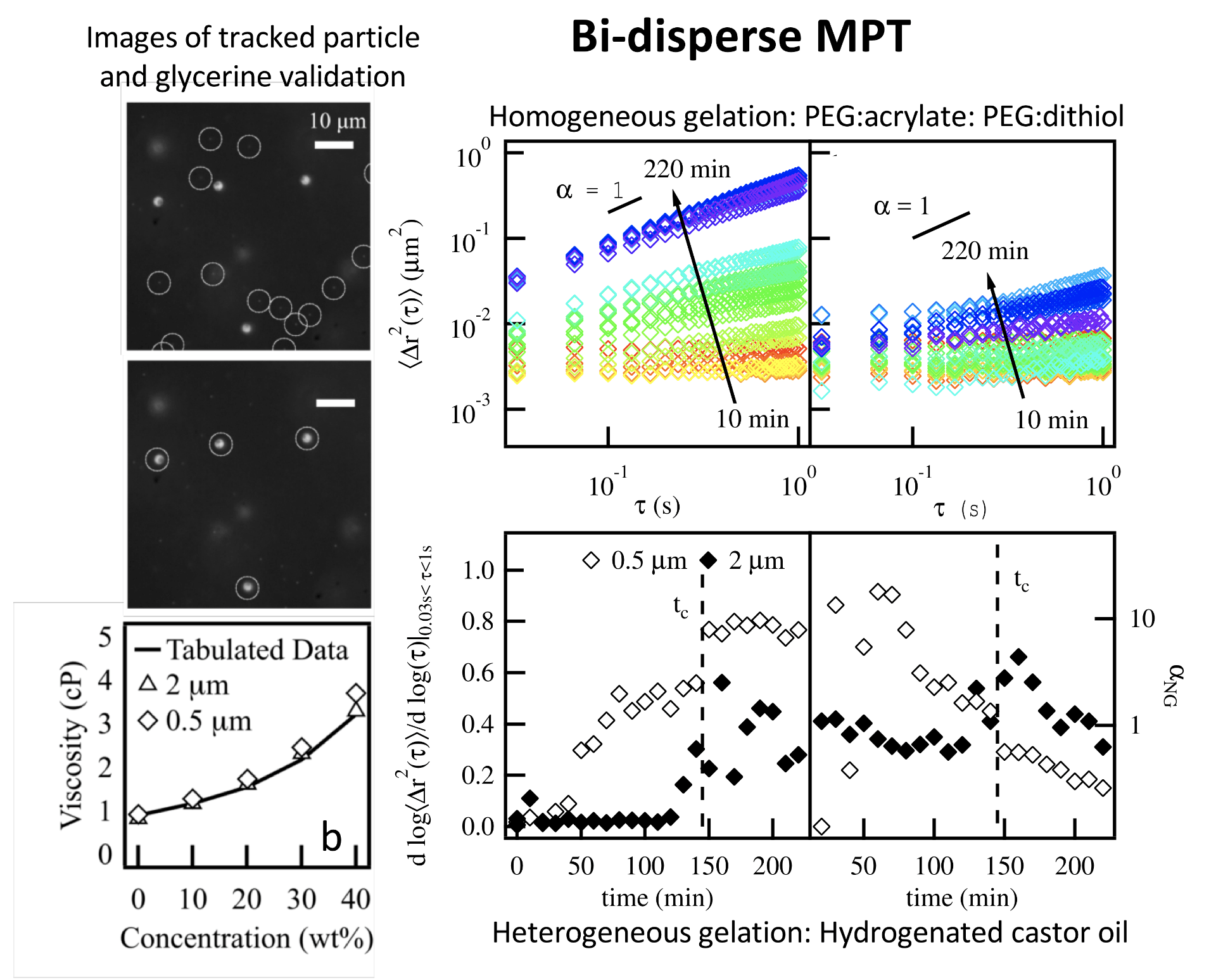Bi-Disperse Multiple Particle Tracking Microrheology
Graduate students: Matthew Wehrman (PhD ’18) and John McGlynn (PhD, expected ’22)
Collaborator: Seth Lindberg (Procter & Gamble Co.)
Publication: M. D. Wehrman, S. Lindberg and K. M. Schultz*, “Multiple particle tracking microrheology measured using bi-disperse probe diameters,” Soft Matter, 14, 5811 – 5820, 2018.
This work develops a new technique to measure several length scales in a single sample using multiple particle tracking microrheology. Traditionally, MPT uses a single particle size to characterize rheological properties. But in complex systems, MPT measurements with a single size particle can characterize distinct properties that are linked to the materials length scale dependent structure. By varying the size of probes, MPT can measure the properties associated with different length scales within a material. We develop a technique to simultaneously track a bi-disperse population of probe particles. 0.5 and 2 μm particles are embedded in the same sample and these particle populations are tracked separately using a brightness- based squared radius of gyration, Rg2.
Bi-disperse MPT is validated by measuring the viscosity of a viscous Newtonian fluid, glycerol, at varying concentrations. These measurements agree well with literature values. This technique then characterizes a homogeneous PEG-acrylate: PEG-dithiol gelation. The scaffold measured is an 18 wt% PEG-acrylate solution, which is above the overlap concentration and, therefore, includes polymeric interaction. The critical relaxation exponent, n, and critical gelation time, tc, are consistent for both particle sizes and agree with previous measurements using a single particle. Finally, degradation of a heterogeneous hydrogenated castor oil colloidal gel is characterized. The two particle sizes measure a different value of the critical relaxation exponent, indicating that they are probing different structures in the material. Analysis of material heterogeneity shows maximum heterogeneity is dependent on probe size indicating that each particle is measuring rheological evolution of a length scale dependent structure.
Overall, bi-disperse MPT increases the amount of information gained in a single measurement, enabling more complete characterization of complex systems that range from consumer care products to biological materials. Current work is using bi-disperse MPT to characterize cell-mediated pericellular remodeling and degrada- tion in the previously discussed PEG-peptide hydrogel. During migration, human mesenchymal stem cells degrade paths in the material but must also maintain a larger scaffold structure to exert cytoskeletal ten- sion to move. Using bi-disperse MPT, we will characterize multiple length scales within the scaffold during cell-mediated degradation. This will determine the properties of the larger structure present during hMSC motility.
